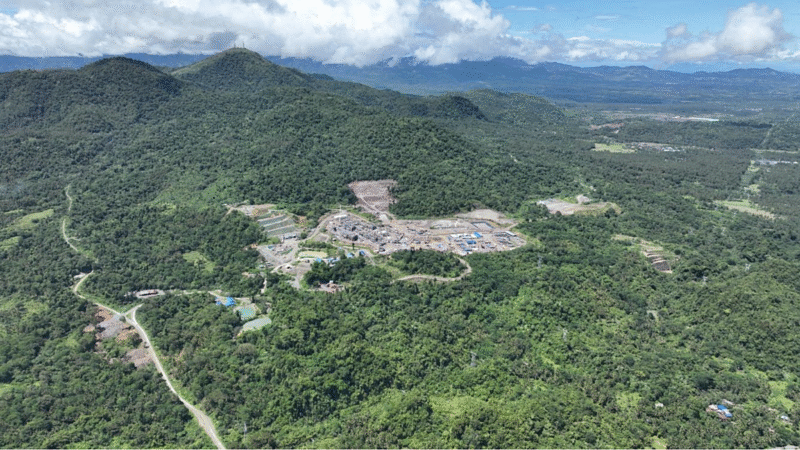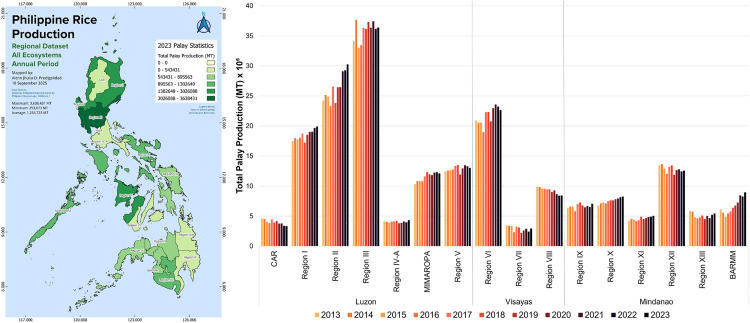New short documentary sheds light on the dark side of skin whitening, exposes illegal trade of mercury-added beauty products

“Kaya po ako gumamit ng skin-lightening products, unang una naman po talaga, para maging maganda (I tried using skin-lightening products, primarily to look beautiful),” a woman narrates, as she is seen facing a bathroom mirror applying skin-care product to her face.
This is the opening scene for the new short video documentary ‘The Dark Side of Skin-Lightening’ as it lays the foundation for why skin-whitening is very popular in the country. The video then continues to explain how the desire for light or fair skin, common among most Filipinos, is deeply rooted in the country’s cultural history.
Produced by environmental NGO BAN Toxics, The Dark Side of Skin-Lightening is a 13-minute documentary shedding light on the hidden dangers lurking within many skin-lightening products (SLPs) due to their mercury content. The video documentary was launched at the La Consolacion University Philippines (LCUP) in Malolos, Bulacan, to an audience of around 1,200 senior high school students, as part of the school’s Earth Day Celebration.
The Dark Side of Skin-Lightening
The woman in the opening scene of the video is Karen Grace Reguyal-Castro, a 31-year-old mother who, along with several other women, came out in 2018 to expose the adverse effects of mercury-added SLPs. These women suffered from contact dermatitis that was further complicated by a weakened immune system. For Grace’s part, she passed on the skin condition to her then-2-year-old son.
“Yun din po yung isa sa pinakamatinding pinagdaanan ko (That was one of the toughest experiences I experienced),” Grace narrates in the video, as she recalls the trauma of seeing her own son suffer the way she did.
The video documentary, which went into production last year, reveals that many mercury-added SLPs continue to proliferate in the local market despite being listed as banned by the country’s Food and Drug Administration (FDA). The video includes market monitoring by BAN Toxics in both online and physical stores, showing how easy it is to buy several banned brands such as Goree, 88 Total White, Collagen Plus, Faiza, among others.
“Ang panawagan ng BAN Toxics ay tuluyan nang ipagbawal ang pagbebenta ng mga mercury-containing skin-lightening products. Nananawagan din tayo sa mga ahensya ng gobyerno na pahigpitin pa ang monitoring at regulation sa pagpasok ng mga iligal na produktong ito (BAN Toxics calls for the complete ban on the sale of mercury-containing skin-lightening products. We also call on government agencies to tighten monitoring and regulation to prevent the entry of these illegal products),” BAN Toxics Advocacy and Campaign Officer Thony Dizon says in the video.
The documentary concludes with a call for a multi-faceted strategy, which includes educational awareness, robust regulations and enforcement policies, and international collaboration, as key to addressing the issue of mercury-added SLPs.
Global Proliferation of Mercury-Added SLPs
The launch of The Dark Side of Skin-Lightening was co-organized by BAN Toxics and LCUP through their partnership under the Toxic-Free Schools Program (TFSP). TFSP is BAN Toxics’ ongoing project to partner with schools and academic institutions to spread awareness of how toxic chemicals affect human health and the environment.
In a forum following the screening of the video, Charline Cheuvart, Policy Officer for Mercury of the European Environmental Bureau (EEB) and Zero Mercury Working Group (ZMWG) shared, via a pre-recorded presentation, how the prevalence of mercury-added SLPs is a global problem. The EEB supported the production of the documentary.
Last year, BAN Toxics was part of a ZMWG research on the availability of mercury-added SLPs on e-commerce platforms. Released in October 2023, the research tested 213 SLPs purchased from online platforms globally. Of those, 191 SLPs, or 90%, were found to contain mercury levels exceeding the legal threshold of 1 part per million (ppm) by a thousandfold, with one product measuring 74,800 ppm.
Mercury is added to skin-lightening products due to its ability to inhibit the formation of melanin. (World Health Organization, 2019). It also holds certain preservative properties which means it can help prolong a product’s shelf-life (Dancer, 2018).
According to Cheuvart, a new investigation by the Environmental Investigation Agency revealed it is standard practice for SLP producers across the globe to manufacture products consisting of 3-4% mercury compounds, which are most often in the form of ammoniated mercury. “They know that they are adding them, it is not by mistake that we find mercury in their creams,” Cheuvart adds.
“What we have shown is that skin-lightening is a global crisis that takes its roots from colorism. It is a major public health concern because there is no safe level of mercury” Cheuvart said.
Health and Environmental Impacts of Mercury
BAN Toxics Policy and Research Officer Jam Lorenzo also gave a pre-recorded presentation during the forum, elaborating on the health and environmental impacts of mercury.
Lorenzo reiterated the point that there is no safe level for mercury, as mercury is indestructible and can bioaccumulate and biomagnify in the food chain.
“When mercury is released or emitted into the environment, it becomes methylated and can enter the food chain as highly toxic methylmercury,” Lorenzo said.
“Accumulation of mercury in kidneys through regular topical application may lead to nephrotic syndrome. Mercury also causes skin defects such as rashes, discoloration, and scarring, as well as loss of resistance to bacterial and fungal infections. It can also cause neurological and reproductive health problems.”
Lorenzo briefly discussed the different policy frameworks for addressing mercury pollution.
At the forefront of these policies is the Minamata Convention on Mercury, a global treaty aimed at protecting human health and the environment from the adverse effects of mercury. To date, 147 parties, including the Philippines, have ratified the agreement, which calls for countries to phase out mercury use in products, ban the opening of new mercury mines, and limit mercury emissions into the environment.
Additionally, Lorenzo cited the ASEAN Cosmetics Directive at the regional level, and at the national level, the Revised Chemical Control Order for Mercury of the Environmental Management Bureau, along with several FDA regulations, as among the existing policies that should address mercury pollution.
“Despite existing laws and regulations, why do mercury-added SLPs remain widely available in the market?” Lorenzo asks, identifying one of the key issues that need to be addressed: the lack or insufficient regulation of e-commerce platforms such as Facebook Marketplace, Shopee, and Lazada.
Be Proud of Your Natural Skin Color
A demonstration of mercury-testing of skin-lightening products using a handheld X-ray Fluorescence (XRF) analyzer was conducted during the forum with the help of Traders Industrial Supply Co., Inc. (TRISCO). According to Dizon, the purpose of the demonstration was to show senior high school students the importance of verifying product safety before use.
“We ask our consumers to be more vigilant when purchasing cosmetic products. Visit the FDA’s website to check which brands are known to contain mercury. If possible, refrain from using skin-whiteners and instead embrace and be proud of your natural skin color,” Dizon said.
The video documentary launch and forum ended with a resounding call from the participants to end mercury pollution. Holding their own placards, they vowed to work towards a toxic-free future for all. (PR)
LINK TO THE VIDEO DOCUMENTARY:
https://drive.google.com/file/d/1BGzQDUCMiiGwejCmpmg9oMVU265UCq9W/view?usp=drivesdk
References:
https://www.zeromercury.org/wp-content/uploads/2023/10/ZMWG-SLP-Oct-2023-Full-Report.pdf
https://www.who.int/publications/i/item/WHO-CED-PHE-EPE-19.13
https://www.allure.com/story/mercury-in-skin-care-products-amazon-ebay-report






